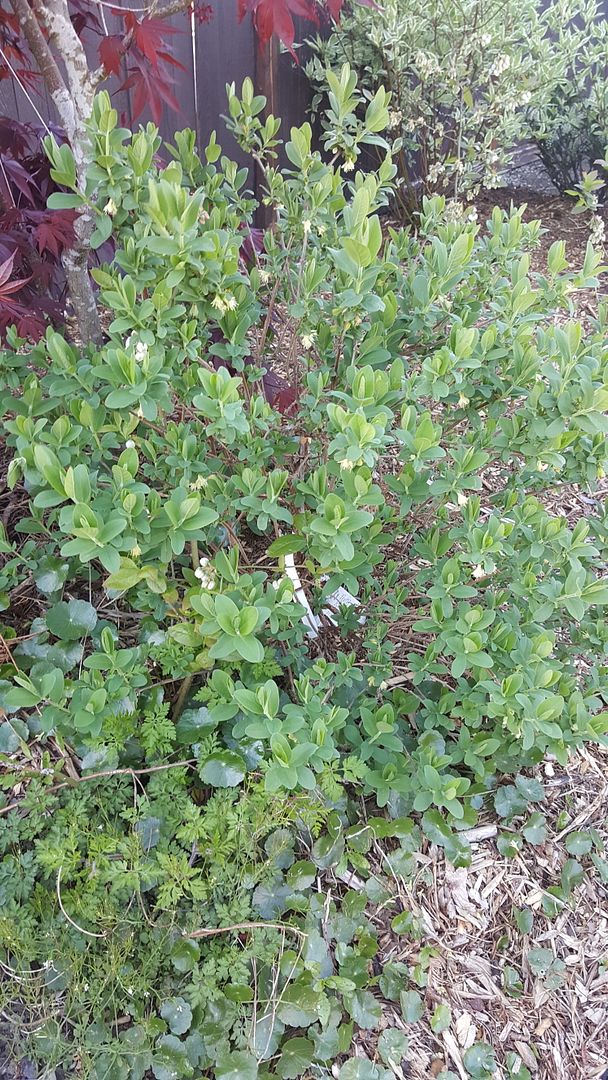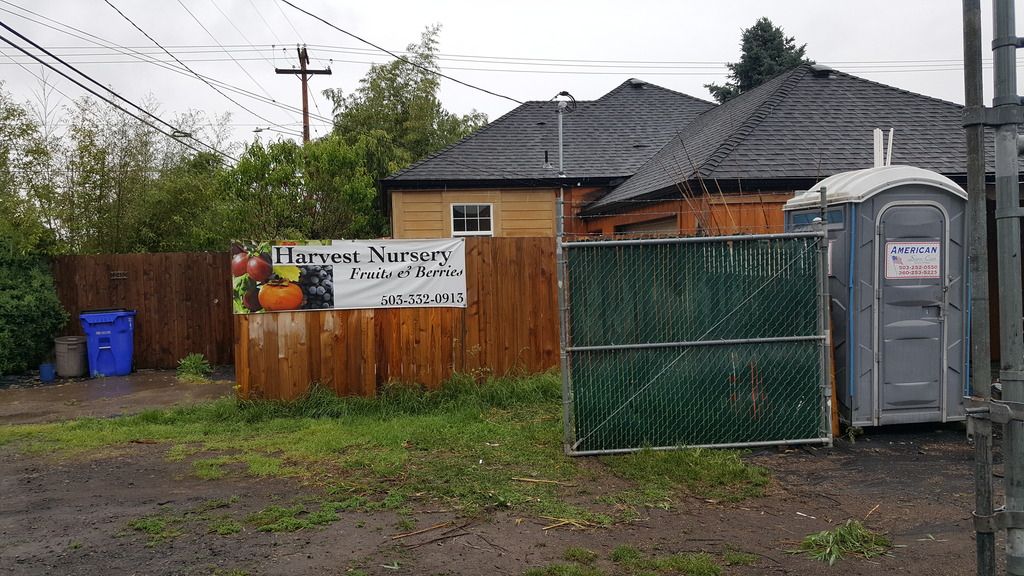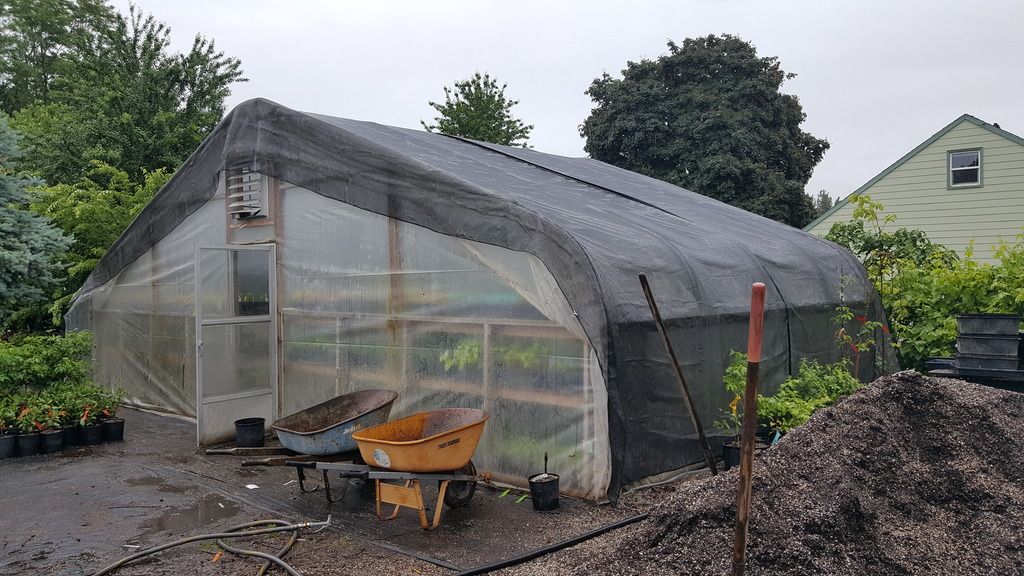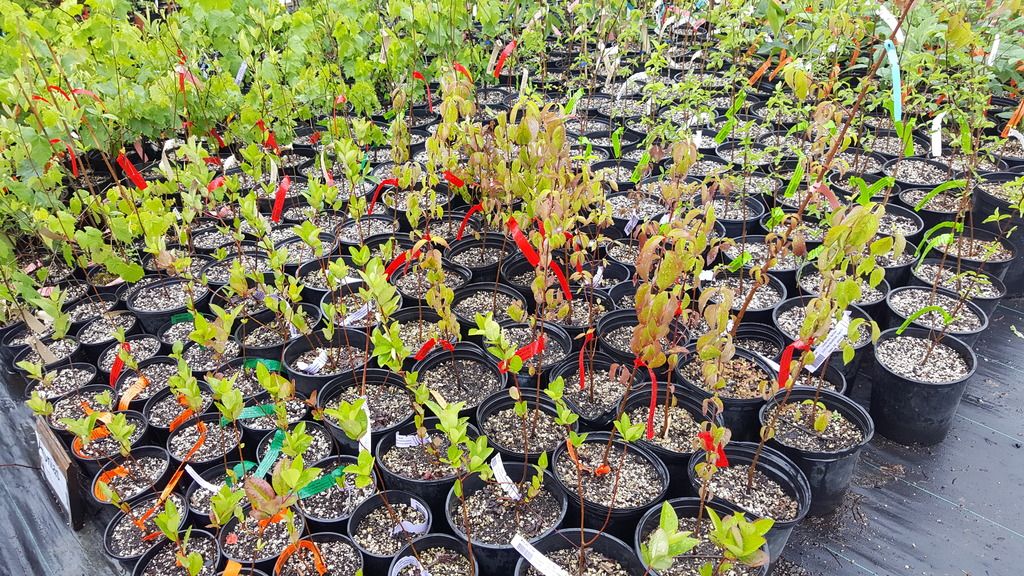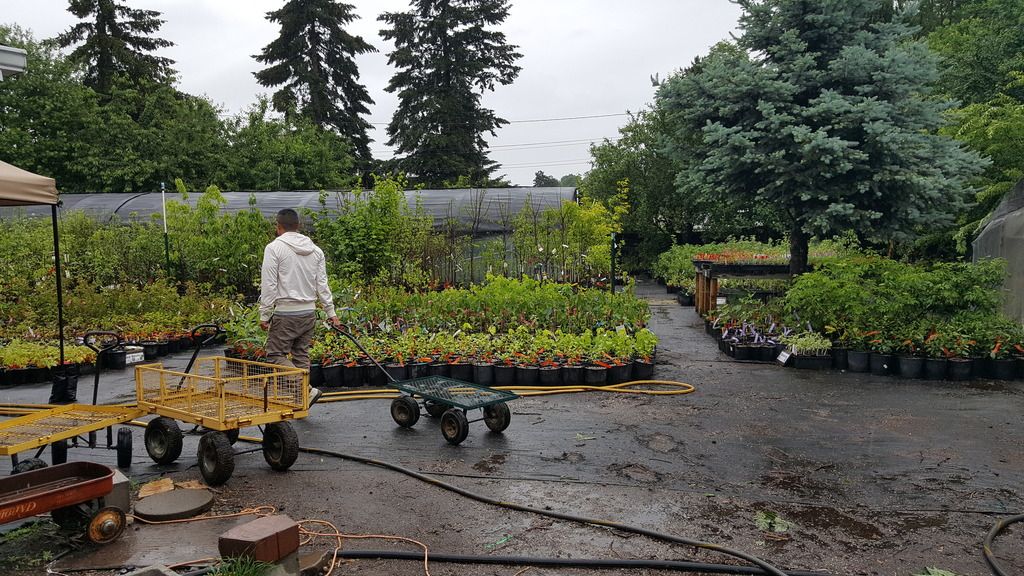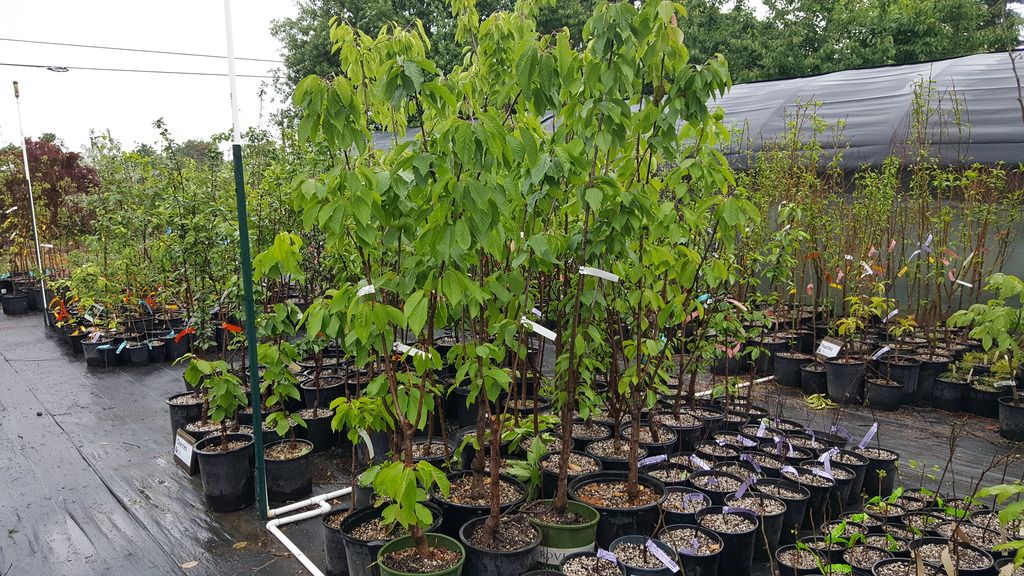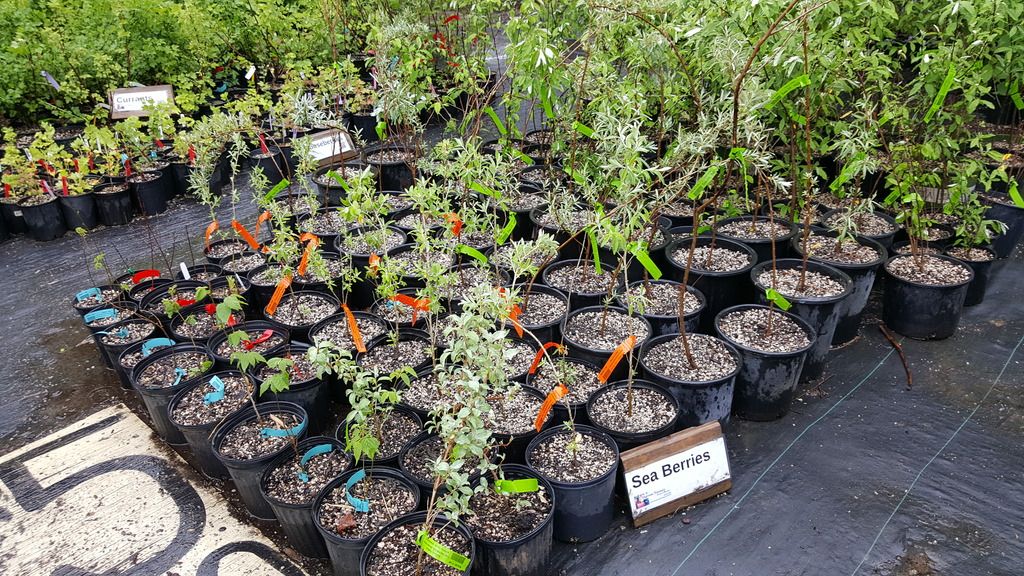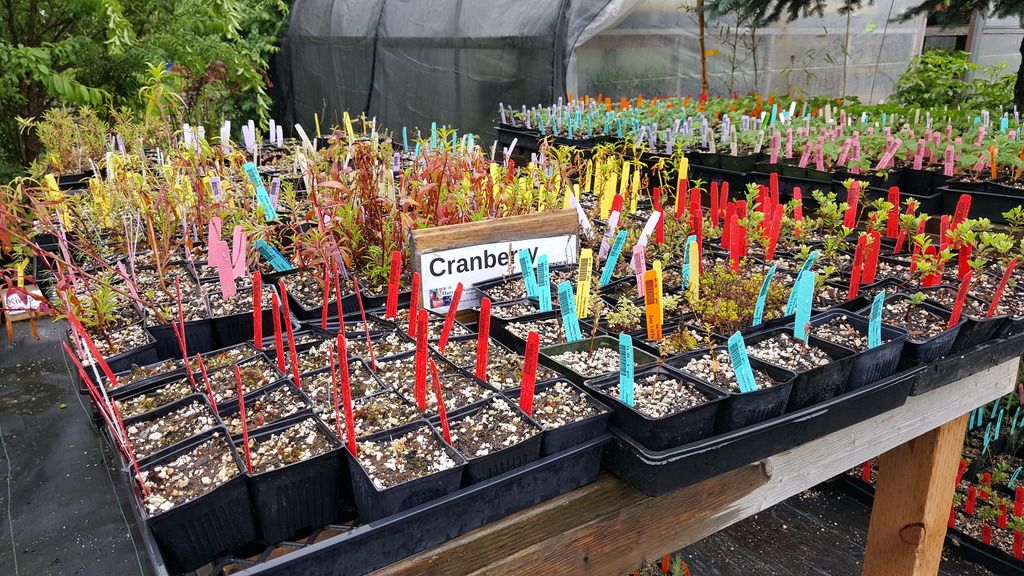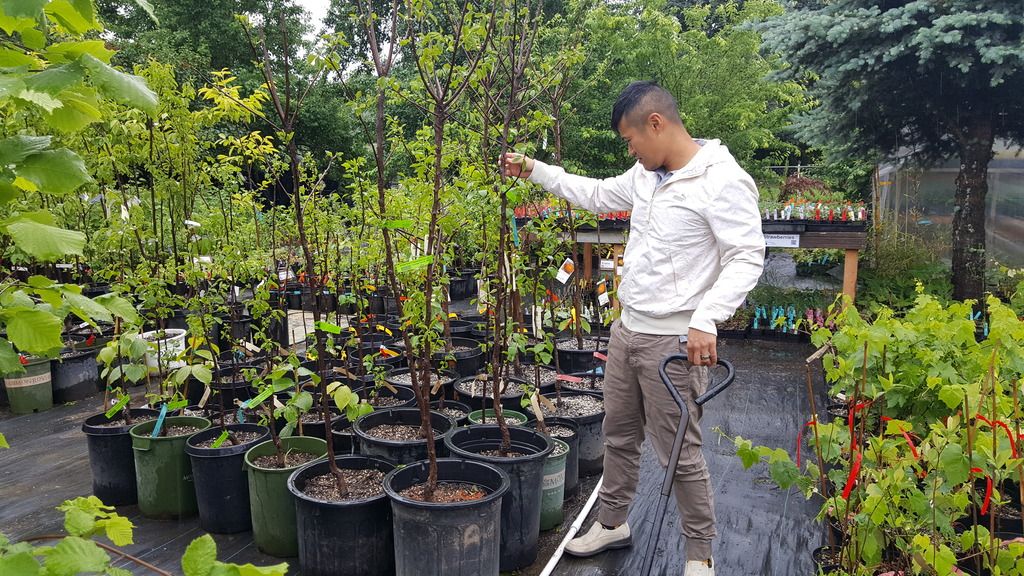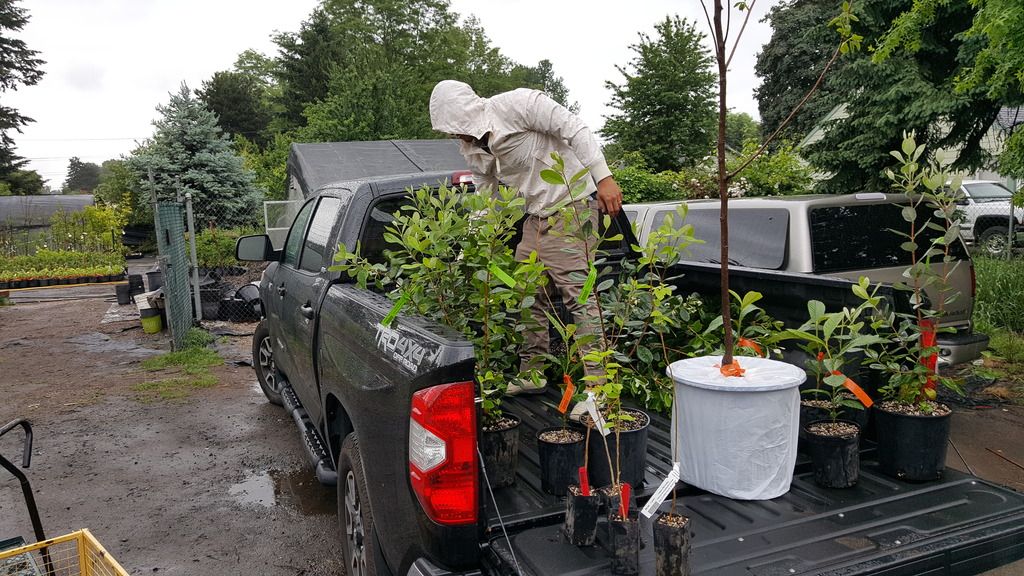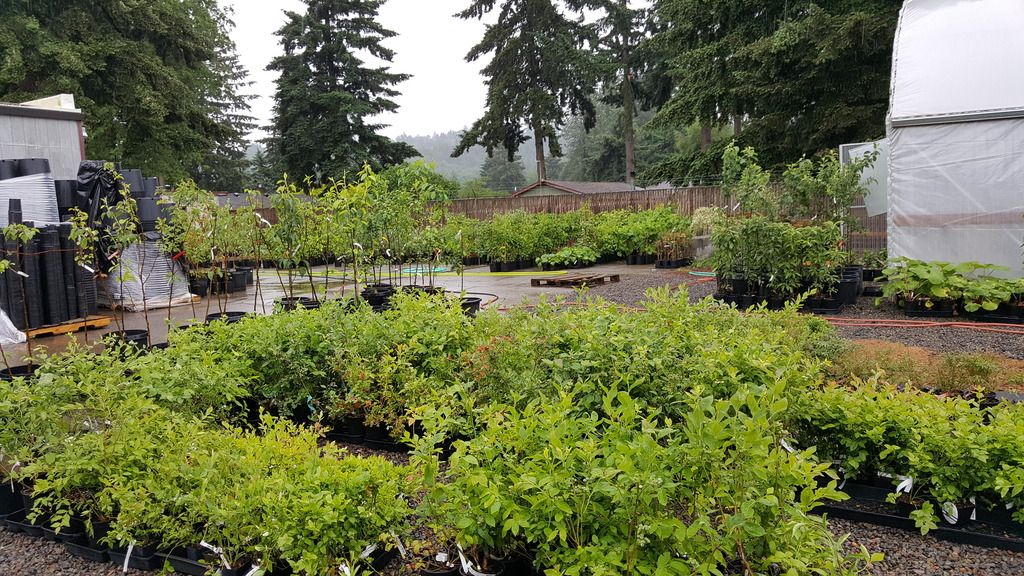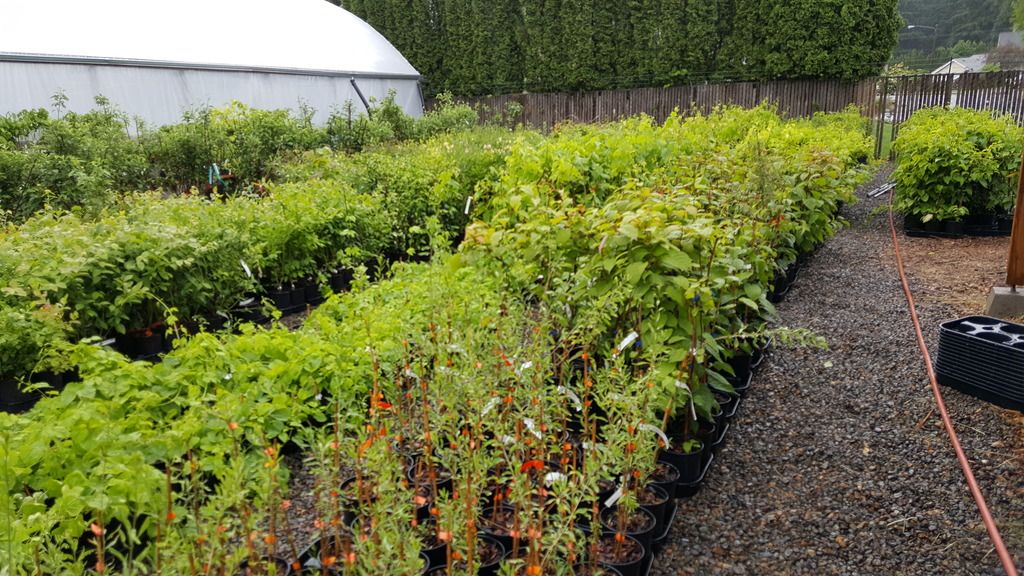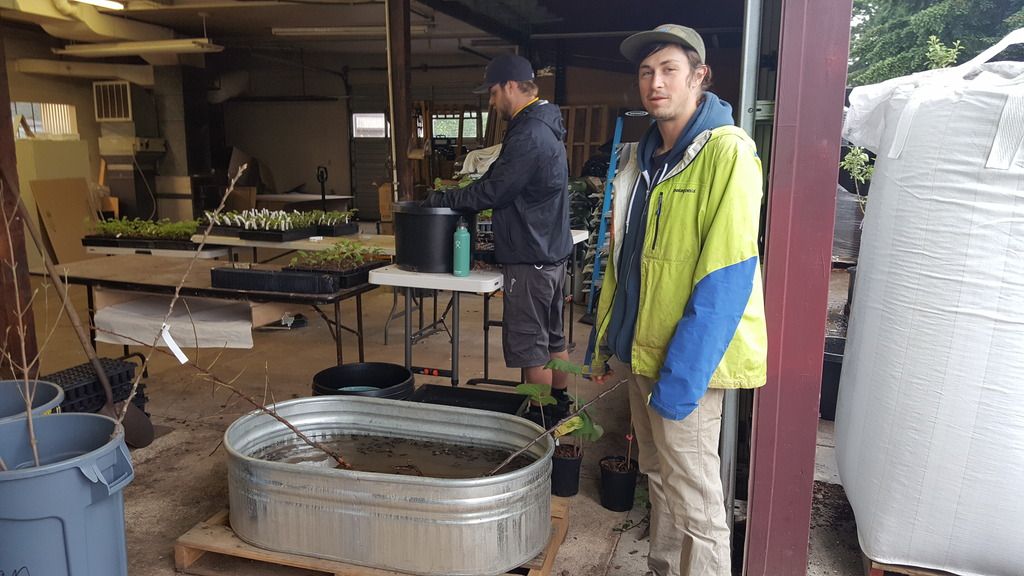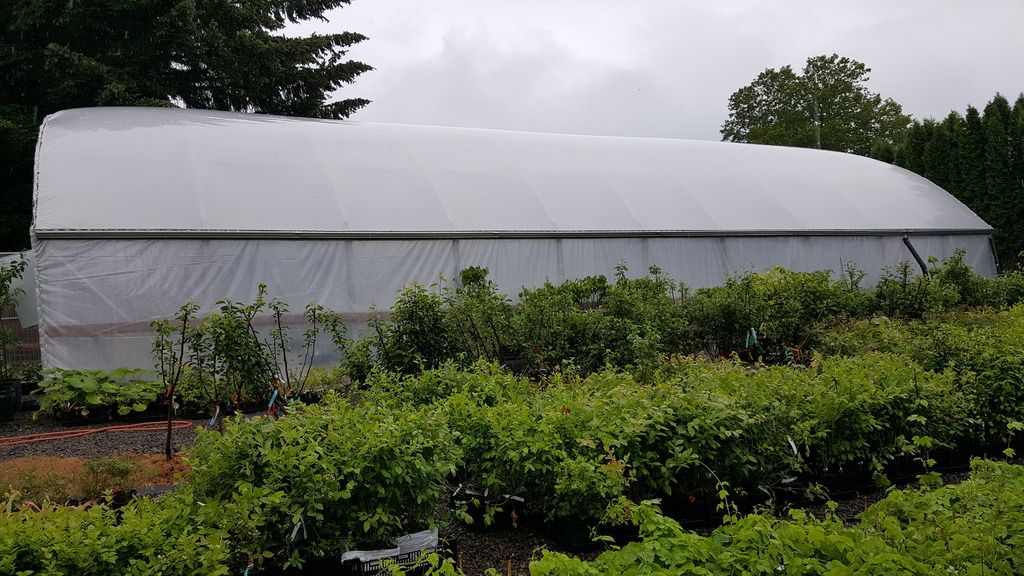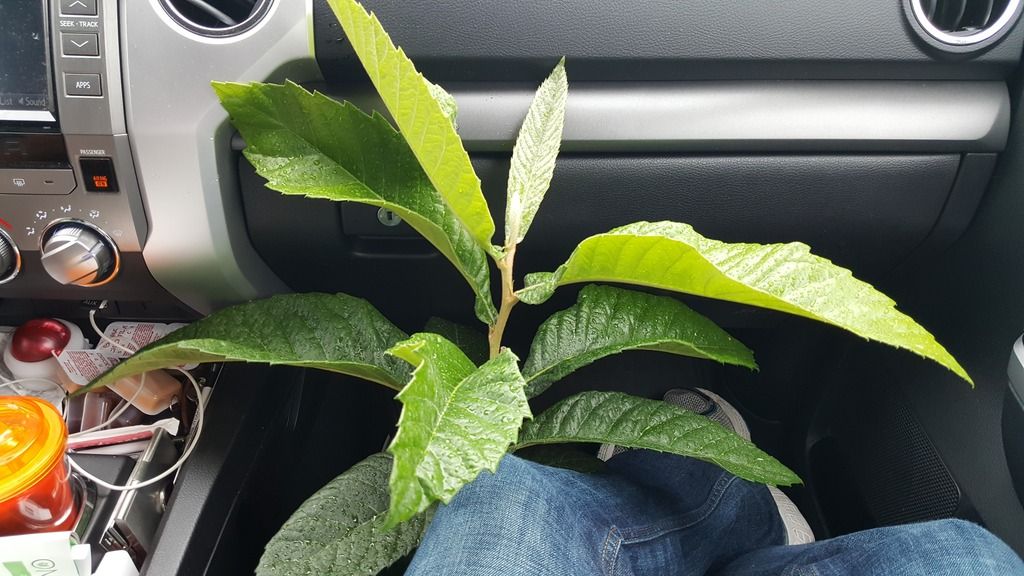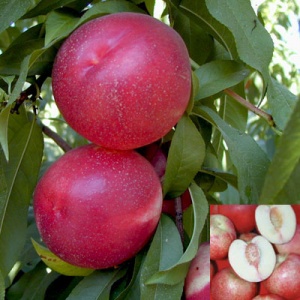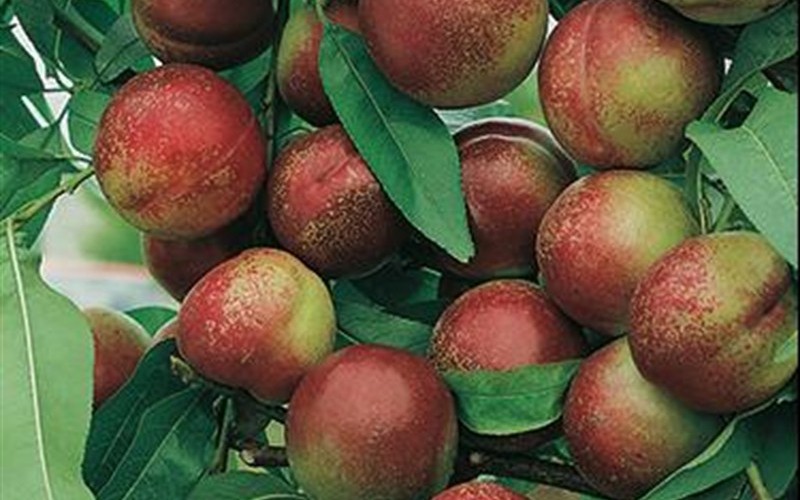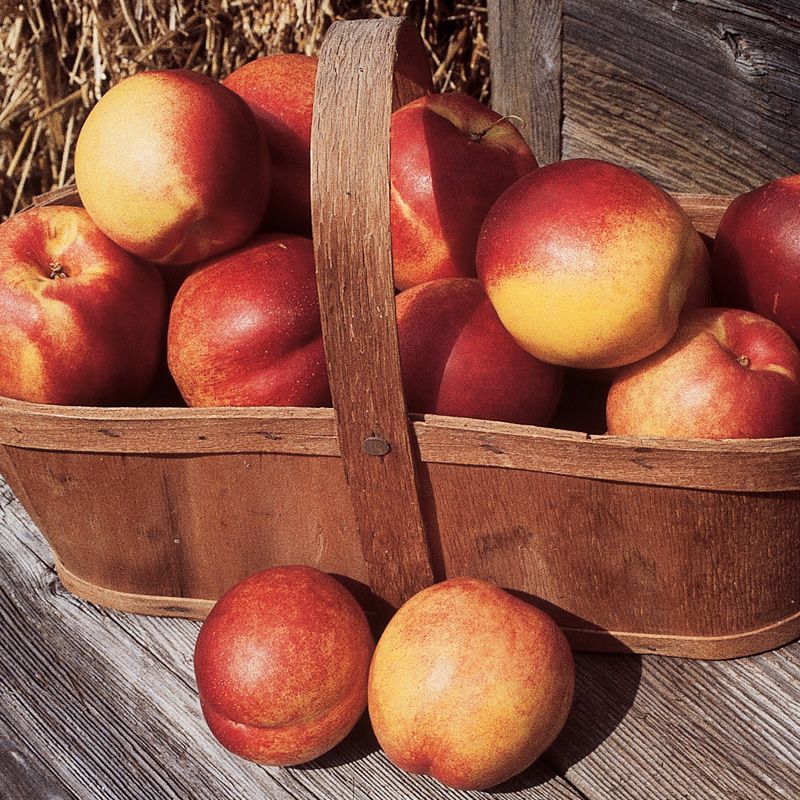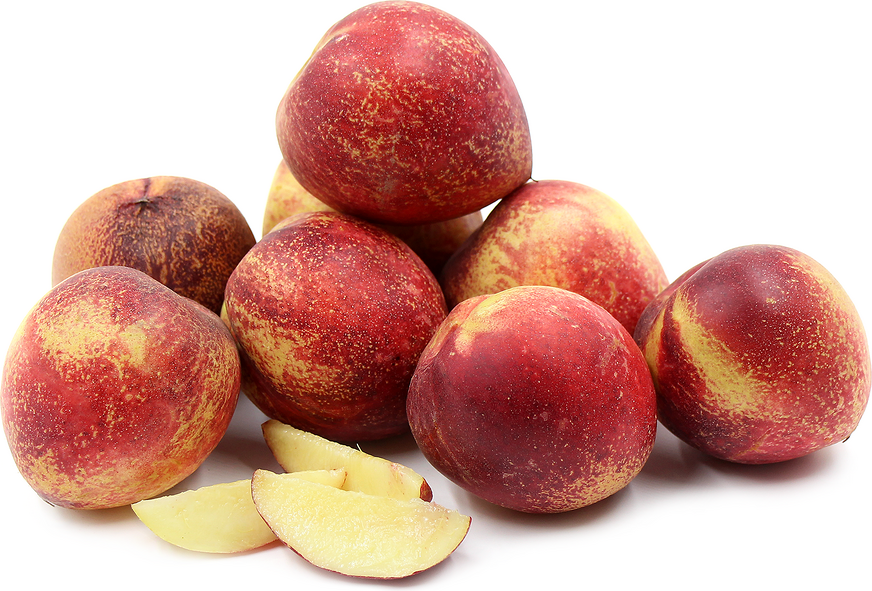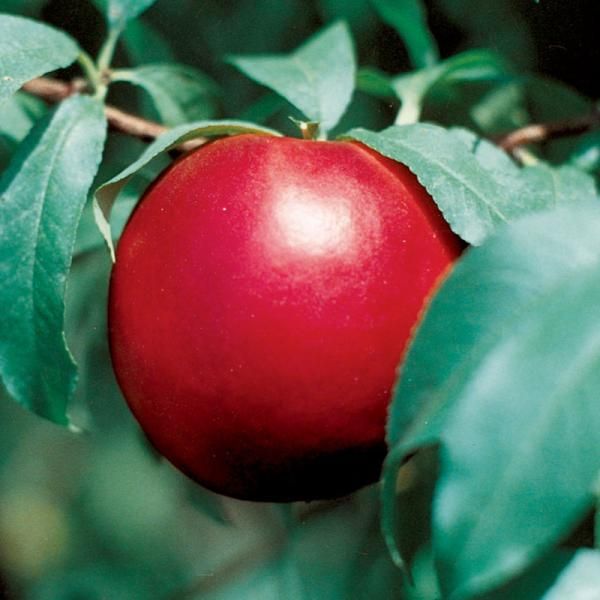Which gave me an idea. I may just plant a whole bunch of fig trees in areas where I frequently run so that in the years to come it will feed others who come across it.
Thursday, May 26, 2016
Wild Cherries - Yuck
I ran across a wild cherry tree on my jog and decided I had to try it. Well it wasn't ripe and I couldn't keep it down. Regardless, I love running into fruit trees "in the wild" lol.
Which gave me an idea. I may just plant a whole bunch of fig trees in areas where I frequently run so that in the years to come it will feed others who come across it.
Which gave me an idea. I may just plant a whole bunch of fig trees in areas where I frequently run so that in the years to come it will feed others who come across it.
Tasting my Borealis Honeyberry (Haskap)
It's late May and almost all of the fruit on my Borealis Honeyberry is ripe. What do Honeyberries taste like? Well they taste like blueberries, not as firm, and much more tart. Makes my face pucker just thinking about it. The fruit is less than an inch long, so it would take a bunch to make a mouthful. They would probably make a great preserve if you were able to harvest enough. My tree is in it's 2nd yr and its only put out a handful of fruit. Not enough for me to get too excited about.
The good thing about these berries are that they would act as a great compliment to the early, mid, and late blue berries planting. Honeyberries have early and mid varieties as well. However, their early ones ripen much earlier than any blueberry. So if you want to extend your blueberry growing season, compliment it with some honeyberries and you can possibly be eating honey/blue berries from May into October.
Haskap/Honeyberry Bloom Chart
Borealis Honeyberries are also a very pretty bushed when they fillout. It has a dome shape growing habit. They grow outdoors here with no protection and I only have 1 mature tree but it produces for me without a pollinator. The productivity may go up if I had another mature variety close by. I have two smaller bushes but they probably have another year before maturing.
I like the idea of an edible hedge so I may just plant a row of these outside my fence. They are much more decorative than blueberries and the fruit is well hidden under the leaves, which is a good deterrent from hungry birds and curious sidewalkers.
Here's a great site that carries many varieties of honeyberries.
http://honeyberryusa.com/honeyberry-plants-1.html
The good thing about these berries are that they would act as a great compliment to the early, mid, and late blue berries planting. Honeyberries have early and mid varieties as well. However, their early ones ripen much earlier than any blueberry. So if you want to extend your blueberry growing season, compliment it with some honeyberries and you can possibly be eating honey/blue berries from May into October.
| Early | Mid | Late | ||
|---|---|---|---|---|
| Aurora* Tundra* Indigo Gem* Indigo Treat* Berry Smart Blue Cinderella Sugar Mountain Blue™ Svetlana |
Borealis* Honey Bee* |
Boreal Blizzard* Solo™ Maxie™ |
Borealis Honeyberries are also a very pretty bushed when they fillout. It has a dome shape growing habit. They grow outdoors here with no protection and I only have 1 mature tree but it produces for me without a pollinator. The productivity may go up if I had another mature variety close by. I have two smaller bushes but they probably have another year before maturing.
I like the idea of an edible hedge so I may just plant a row of these outside my fence. They are much more decorative than blueberries and the fruit is well hidden under the leaves, which is a good deterrent from hungry birds and curious sidewalkers.
Here's a great site that carries many varieties of honeyberries.
http://honeyberryusa.com/honeyberry-plants-1.html
Wednesday, May 25, 2016
Thinning my Rubinette Apple
Unless your fruit trees are well lestablished, it's usually a good idea to thin fruits off a young fruit tree. My Rubinette apple, which is going through it's 2nd year in ground put out a fair amount of apples this year.
As much as I would love to try to keep every single apple on my young tree. The quality of fruit would not be as good and the thin branches would not be able to support the weight of the full size apples. It's already struggling as is with the small immature fruit. I'm afraid that it will eventually break my scaffolding limbs if I left them all on the tree.
This quick video shows how I choose which ones to pluck off.
Pink Jasmines do not work here in Seattle
Besides fruit I like the idea of having fragrant flowers like jasmine around the garden. 1 they smell good and 2 they help attract the beneficial pollinating bees.
Every Spring I see these beautiful fragrant Jasmines at the big box stores and they smell great. The problem is they are no more than annuals in Seattle since they cannot with stand the Seattle winters. I some in the ground by my trellis hoping to have them vine up and all 3 plants died. So pink Jasmines are a bit of a waste of money if you want to grow them outside here in Seattle.
However, all is not lost. Star Jasmine does great outdoors here in Seattle. I have a vine that is thriving!
I'm also trialing the Night Blooming Jasmine. I'll leave it out this winter to see how it will react to our climate. I've managed to root a cutting so all is not lost if it doesn't survive the elements.
Tuesday, May 24, 2016
Nursery Review: Harvest Nursery in Portland, OR
Harvest Nursery in Portland
10470 NE 6th Drive
Portland OR 97211
503-332-0913
Hrs: 10AM-5:30pm 7 Days
13488 S. Groshong Rd.
Molallor OR 97038
503-459-1489
Hrs: 10am-05:30pm Sun. Tues. & Fri.
http://harvestnursery.com/blog/home/
“I want to help people grow food for generations. In order to be able to do that they need to be able to buy edible plants at a much lower price than what most nurseries currently charge. My goal is to remove that price limitation. Lower prices mean more plants and more food.”Gabriel Kahn, Owner of Harvest Nursery
The nursery itself is in an odd place next to an apartment complex. There's 2 greenhouse, and only one available to customers. It's a relatively small but they do have a 40 acre location that was just purchased. In the small space are all the plants that I hold dear. Fruit trees and berries. Don't expect to go here and buy a japanese maple.
The have a wide selection of $5 figs. A little on the small side and remind me of tissue culture starts. All the plants that have been propagated by HN have killer prices. The plants from Monrovia and other big distribution nurseries were some what comparable to other nurseries.
Overall I like this nursery. the only quirky thing is we were only allowed 3 bags for our plants, considering we purchased about 20 trees, 3 bags seems to be on the light side.
Up potting in the rain
The smaller greenhouse for customers. It has a shade cloth
We ended up leaving with over a dozen pineapple guavas, Haichia persimmon, mulberries, and loquats. Next time I have to check out their 40 acre farm.
Friday, May 20, 2016
Nursery Review: One Green World In Portland
One Green World
HOURS: Tuesday-Saturday 10am-5pm, Sunday 10am-2pm, Closed Monday.
1-877-353-4028
6469 SE 134th Ave
Portland, OR 97236
I'm a fan of their online store and after visiting the center I'm also a fan of the nursery. It's not massive like Flower World but it has all the trees that I love. Fruit and berries!
The workers are super friendly and are eager to show you some of the cool varieties you would have missed otherwise.
I ended up with a great looking Loquat for $19 from One green world. I kinda regret not getting some more pawpaws.
HOURS: Tuesday-Saturday 10am-5pm, Sunday 10am-2pm, Closed Monday.
1-877-353-4028
6469 SE 134th Ave
Portland, OR 97236
I'm a fan of their online store and after visiting the center I'm also a fan of the nursery. It's not massive like Flower World but it has all the trees that I love. Fruit and berries!
The workers are super friendly and are eager to show you some of the cool varieties you would have missed otherwise.
I ended up with a great looking Loquat for $19 from One green world. I kinda regret not getting some more pawpaws.
Thursday, May 19, 2016
Nectarine Varieties - Which one is the Best for Seattle?
I have to admit that Nectarines are in my top 5 for favorite fruits after tasting a fresh one off my own tree. The fact that they are so expensive at the grocery store and never in good condition makes it a perfect candidate to be grown as a back yard fruit tree.
The flavor is sweet, juicy, tart and melony all at the same time. And it can be enjoyed crunchy or soft. With so many varieties to choose from it can be hard to decide which one to buy for your climate. Most Nectarines will do well in zones 6-9.
The biggest problem with nectarines can be the dreaded leaf curl disease. However if treated with a copper fungicide the growing season can be very fruitful and delicious.
The Kreibich Nectarine and Pacific Pride are supposedly to be very variety resistant to the leaf curl disease. One Green world has them for sale.
There are so many nectarines that it can be extremely daunting to figure out which varieties to grow. The list below should help in your research.
Arctic Jay: large nectarine with pale yellow skin and red blush; flesh is white with a rich, sweet flavor; freestone. Midseason harvest.
Artic Blaze White: Taste test winner. One of the best of the low acid white nectarines: rich flavor and firm texture in early season, very sweet when soft ripe. Large size, red and creamy white skin.
Artic Rose: medium-size fruit with a white to pale yellow skin and red blush; white, sweet flesh; semi-freestone. Early harvest.
Artic Glo: Exciting, sprightly-sweet, early season white-fleshed nectarine. High scoring in taste tests: nice balance of sugar and acid, very appealing flavor. Highly recommended for home orchards.
Artic Jay: Taste test winner. Very attractive, firm, freestone fruit is richly flavored, with a balance of acid and sugar.
Artic Queen: Delicious, super-sweet white nectarine, very similar to Arctic Rose, but ripening 3-4 weeks later (early August in Central CA). Rich flavor and nice crunchy texture when firm ripe, extremely sweet when fully ripe. High-scoring in taste tests.
Artic Star: large nectarine with bright red skin; white flesh is very sweet and rich flavored; semi-freestone. Early harvest.
Armking: large nectarine with olive-green skin and reddish cast; flesh is yellow with sweet aroma, semi-freestone; from California. Early harvest.
Atomic Red: With one of the most intense blooms we’ve ever seen on a fruiting tree, Atomic Red Fruiting & Flowering Nectarine is sure to amaze. The deep red of the double flower acts like a beacon, calling all eyes to marvel at the beauty in your yard. But exceptional bloom is not all; Atomic Red provides delicious nectarines as well.The fruit is medium to large, with sweet white flesh.
Cavalier: From Virginia. Orange-yellow skin blushed with mottled dark red. Medium size, firm, aromatic, yellow freestone fruit resistant to brown rot. Hardy, showy blossom.
Desert Dawn: small to medium fruit with red skin; yellow, firm, sweet, juicy flesh and aromatic; semi-freestone; from California. Early harvest.
Double Delight: medium-size fruit with dark red skin; yellow flesh with rich flavor; freestone. Midseason harvest.
Fairlane: large nectarine with red over yellow skin; yellow flesh; clingstone; from California. Late harvest.
Fantasia: large oval fruit with bright red over yellow skin; yellow, firm, smooth flesh with excellent flavor; freestone from California. Midseason harvest.
Firebright: large nectarine with red over yellow skin; firm, smooth, juicy, yellow flesh with great flavor; semi-freestone from California. Midseason harvest.
Fire Sweet: medium nectarine with flaming red and yellow skin; firm, smooth, juicy yellow flesh that is very sweet; clingstone from California. Midseason harvest.
Flamekist: High quality late season clingstone. Large, firm, red over yellow skin. Popular fresh market variety
Flavortop: large nectarine with red skin flecked; yellow; firm, juicy, golden yellow flesh streaked with red and great flavor; freestone from California. Midseason harvest.
Garden Delight: Large yellow freestone is sweet, delicious, refreshing. Heavy bearing 5-6 ft. tree is easily covered to protect blooms from frost
Goldmine: large fruit with red blushed over white skin; white flesh that is tasty; freestone from New Zealand. Late harvest.
Hardired: Productive, reliable and carefree. This variety is disease-resistant (especially to bacterial spot and brown rot) making it easy to grow, and it is very productive — thin the bountiful fruit crop for bigger nectarines. Fruits feature firm, yellow, flavorful flesh. Semi-freestone. Originates from Ontario, Canada, introduced in 1974. Ripens in August. Self-pollinating.
Harko: One of the highest scoring nectarines in DWN fruit tastings. Cold hardy Canadian variety has showy, large, single pink blossoms. Tolerant of bacterial spot and brown rot.
Heavenly White: very large nectarine with creamy white skin that is heavily blushed red; white flesh and excellent flavor that is favored by connoisseurs; freestone. Midseason harvest.
Honey Kist:
Early-ripening yellow nectarine with high sugar and low acid (no tartness). Begin picking before the fruit begins to soften, the subacid varieties have the advantage of being good to eat before they reach peak ripeness.
Independence: medium to large nectarine with cherry-red skin; firm, yellow flesh and good flavor; freestone from California. Midseason harvest.
John Rivers: medium to large fruit with white skin and crimson blush; greenish white flesh is tender and juicy; semi-freestone from England. Early harvest.
Jolly Red: Very large fruit to 3 1/2 or more if properly thinned. Freestone, delicious flavor. Skin bright orange-red over yellow.
Juneglo: medium-size fruit with red skin; yellow flesh and very good flavor; freestone. Early havest.
Le Grand: large nectarine with bright red and yellow skin; yellow flesh with rubbery texture; delicate, semi-acid taste; clingstone from California. Late harvest.
Liz’s Late: medium-size nectarine with red-over-yellow skin; yellow flesh with a sweet-spicy flavor; freestone. Late harvest.
Mericrest: medium-size nectarine with bright red skin; yellow, flavorful flesh; freestone. Midseason harvest.
Nectacrest: Sweet and juicy as nectar. Easy to grow as any peach tree. Bears medium-to-large fruit with a melting, pure-white flesh. Flavor is satisfying without being “syrupy”. Introduced by Rutgers in 1947. Freestone. Ripens in early September. Self-pollinating.
Nectar Babe: small to medium-size fruit with dark red skin; yellow flesh with good flavor; freestone. Midseason harvest.
Necta Zee: medium-size nectarine with red skin; yellow flesh is sweet and flavorful; freestone; Early to midseason harvest.
Panamint: medium to large fruit with bright red skin; yellow flesh; freestone California. Midseason harvest.
Pioneer: small to medium sized nectarine with a thin yellow skin with a red blush; yellow flesh touched with red; freestone from California. Midseason harvest.
Ruby Grand: large nectarine with ruby skin; firm yellow flesh with great flavor; freestone. Early to midseason harvest.
Royal Giant: This overachieving nectarine can be as big as an apple! This is one of the most popular varieties planted by commercial growers in California. The yellow-fleshed fruit is big, sweet, tangy and juicy. They are often found in grocery stores, but once you’ve tasted them at their peak, you’ll only want these nectarines homegrown. Clingstone. Developed in Modesto, California, introduced in 1977. Ripens in mid August. Self-pollinating.
Sauzee King: First 'donut' style nectarine from Zaiger Hybrids. Outstanding early season variety has white flesh that is sweet and juicy. Red skin, blushed with yellow. Tree sets fruit at a young age and produces heavily. Thinning is required for large fruit size.
Silver Lode: medium fruit that is most red over creamy yellow with red specks; juicy, sweet flavor; freestone from California. Early to midseason harvest.
Snow Queen: very large nectarine that is fair-skinned and a light russet blush; white, melting, juicy flesh that is fine textured; freestone from California. Early harvest.
Southern Belle: large fruit with yellow skin and red blush; yellow flesh has good flavor; freestone. Early harvest.
Stanwick: medium fruit with a greenish white skin that has a shade of purple red; white flesh is juicy; semi-freestone origin unknown. Late harvest.
Stark Crimson: Perfect for fruit salads. Slice into this deep crimson fruit to reveal a snowy white center. The flesh is sweet, juicy and firm, and offers a new spin on nectarine dessert recipes. Ideal for eating fresh, cooking or canning. Introduced circa 1993. Freestone. Ripens in early August. Self-pollinating. May be covered by U.S.P.P. #8461 or other patents. Bradcrim cultivar.
Stark Sunglo: large fruit with yellow skin overspread in part with red; yellow flesh that reddens near pit; slightly acid flavor; freestone from California. Midseason harvest.
Stribling Giant Free: large nectarine with yellow skin blushed with red; yellow tasty flesh; freestone from California. Midseason harvest.
Stribling White Free: large fruit with white skin blushed with red; white, sweet and juicy flesh with a creamy texture; freestone from California. Early harvest.
Sun Grand: large nectarine with red-blushed yellow skin; firm, yellow flesh; freestone from California. Midseason harvest.
Sunred: small to medium fruit with bright red skin; yellow flesh is firm and flavorful; semi-freestone from Florida. Early harvest.
2W68W: large nectarine with red over yellow skin; firm flesh and excellent flavor; freestone from California. Early to midseason harvest.
Zee Glo: Taste test winner. Delicious late summer fruit with classic, zesty, nectarine flavor. Superb balance of acid and sugar. Attractive, dark red skin. Showy pink blossoms in spring.
Most of these varieties are produced by Dave Wilson Nursery.
The flavor is sweet, juicy, tart and melony all at the same time. And it can be enjoyed crunchy or soft. With so many varieties to choose from it can be hard to decide which one to buy for your climate. Most Nectarines will do well in zones 6-9.
The biggest problem with nectarines can be the dreaded leaf curl disease. However if treated with a copper fungicide the growing season can be very fruitful and delicious.
The Kreibich Nectarine and Pacific Pride are supposedly to be very variety resistant to the leaf curl disease. One Green world has them for sale.
There are so many nectarines that it can be extremely daunting to figure out which varieties to grow. The list below should help in your research.
Nectarine varieties:
Arctic Jay: large nectarine with pale yellow skin and red blush; flesh is white with a rich, sweet flavor; freestone. Midseason harvest.
Artic Blaze White: Taste test winner. One of the best of the low acid white nectarines: rich flavor and firm texture in early season, very sweet when soft ripe. Large size, red and creamy white skin.
Artic Rose: medium-size fruit with a white to pale yellow skin and red blush; white, sweet flesh; semi-freestone. Early harvest.
Artic Glo: Exciting, sprightly-sweet, early season white-fleshed nectarine. High scoring in taste tests: nice balance of sugar and acid, very appealing flavor. Highly recommended for home orchards.
Artic Jay: Taste test winner. Very attractive, firm, freestone fruit is richly flavored, with a balance of acid and sugar.
Artic Queen: Delicious, super-sweet white nectarine, very similar to Arctic Rose, but ripening 3-4 weeks later (early August in Central CA). Rich flavor and nice crunchy texture when firm ripe, extremely sweet when fully ripe. High-scoring in taste tests.
Artic Star: large nectarine with bright red skin; white flesh is very sweet and rich flavored; semi-freestone. Early harvest.
Armking: large nectarine with olive-green skin and reddish cast; flesh is yellow with sweet aroma, semi-freestone; from California. Early harvest.
Atomic Red: With one of the most intense blooms we’ve ever seen on a fruiting tree, Atomic Red Fruiting & Flowering Nectarine is sure to amaze. The deep red of the double flower acts like a beacon, calling all eyes to marvel at the beauty in your yard. But exceptional bloom is not all; Atomic Red provides delicious nectarines as well.The fruit is medium to large, with sweet white flesh.
Cavalier: From Virginia. Orange-yellow skin blushed with mottled dark red. Medium size, firm, aromatic, yellow freestone fruit resistant to brown rot. Hardy, showy blossom.
Desert Dawn: small to medium fruit with red skin; yellow, firm, sweet, juicy flesh and aromatic; semi-freestone; from California. Early harvest.
Double Delight: medium-size fruit with dark red skin; yellow flesh with rich flavor; freestone. Midseason harvest.
Fairlane: large nectarine with red over yellow skin; yellow flesh; clingstone; from California. Late harvest.
Fantasia: large oval fruit with bright red over yellow skin; yellow, firm, smooth flesh with excellent flavor; freestone from California. Midseason harvest.
Firebright: large nectarine with red over yellow skin; firm, smooth, juicy, yellow flesh with great flavor; semi-freestone from California. Midseason harvest.
Fire Sweet: medium nectarine with flaming red and yellow skin; firm, smooth, juicy yellow flesh that is very sweet; clingstone from California. Midseason harvest.
Flamekist: High quality late season clingstone. Large, firm, red over yellow skin. Popular fresh market variety
Flavortop: large nectarine with red skin flecked; yellow; firm, juicy, golden yellow flesh streaked with red and great flavor; freestone from California. Midseason harvest.
Garden Delight: Large yellow freestone is sweet, delicious, refreshing. Heavy bearing 5-6 ft. tree is easily covered to protect blooms from frost
Goldmine: large fruit with red blushed over white skin; white flesh that is tasty; freestone from New Zealand. Late harvest.
Hardired: Productive, reliable and carefree. This variety is disease-resistant (especially to bacterial spot and brown rot) making it easy to grow, and it is very productive — thin the bountiful fruit crop for bigger nectarines. Fruits feature firm, yellow, flavorful flesh. Semi-freestone. Originates from Ontario, Canada, introduced in 1974. Ripens in August. Self-pollinating.
Harko: One of the highest scoring nectarines in DWN fruit tastings. Cold hardy Canadian variety has showy, large, single pink blossoms. Tolerant of bacterial spot and brown rot.
Heavenly White: very large nectarine with creamy white skin that is heavily blushed red; white flesh and excellent flavor that is favored by connoisseurs; freestone. Midseason harvest.
Honey Kist:
Early-ripening yellow nectarine with high sugar and low acid (no tartness). Begin picking before the fruit begins to soften, the subacid varieties have the advantage of being good to eat before they reach peak ripeness.
Independence: medium to large nectarine with cherry-red skin; firm, yellow flesh and good flavor; freestone from California. Midseason harvest.
John Rivers: medium to large fruit with white skin and crimson blush; greenish white flesh is tender and juicy; semi-freestone from England. Early harvest.
Jolly Red: Very large fruit to 3 1/2 or more if properly thinned. Freestone, delicious flavor. Skin bright orange-red over yellow.
Juneglo: medium-size fruit with red skin; yellow flesh and very good flavor; freestone. Early havest.
Le Grand: large nectarine with bright red and yellow skin; yellow flesh with rubbery texture; delicate, semi-acid taste; clingstone from California. Late harvest.
Liz’s Late: medium-size nectarine with red-over-yellow skin; yellow flesh with a sweet-spicy flavor; freestone. Late harvest.
Mericrest: medium-size nectarine with bright red skin; yellow, flavorful flesh; freestone. Midseason harvest.
Nectacrest: Sweet and juicy as nectar. Easy to grow as any peach tree. Bears medium-to-large fruit with a melting, pure-white flesh. Flavor is satisfying without being “syrupy”. Introduced by Rutgers in 1947. Freestone. Ripens in early September. Self-pollinating.
Nectar Babe: small to medium-size fruit with dark red skin; yellow flesh with good flavor; freestone. Midseason harvest.
Necta Zee: medium-size nectarine with red skin; yellow flesh is sweet and flavorful; freestone; Early to midseason harvest.
Panamint: medium to large fruit with bright red skin; yellow flesh; freestone California. Midseason harvest.
Pioneer: small to medium sized nectarine with a thin yellow skin with a red blush; yellow flesh touched with red; freestone from California. Midseason harvest.
Ruby Grand: large nectarine with ruby skin; firm yellow flesh with great flavor; freestone. Early to midseason harvest.
Royal Giant: This overachieving nectarine can be as big as an apple! This is one of the most popular varieties planted by commercial growers in California. The yellow-fleshed fruit is big, sweet, tangy and juicy. They are often found in grocery stores, but once you’ve tasted them at their peak, you’ll only want these nectarines homegrown. Clingstone. Developed in Modesto, California, introduced in 1977. Ripens in mid August. Self-pollinating.
Sauzee King: First 'donut' style nectarine from Zaiger Hybrids. Outstanding early season variety has white flesh that is sweet and juicy. Red skin, blushed with yellow. Tree sets fruit at a young age and produces heavily. Thinning is required for large fruit size.
Silver Lode: medium fruit that is most red over creamy yellow with red specks; juicy, sweet flavor; freestone from California. Early to midseason harvest.
Snow Queen: very large nectarine that is fair-skinned and a light russet blush; white, melting, juicy flesh that is fine textured; freestone from California. Early harvest.
Southern Belle: large fruit with yellow skin and red blush; yellow flesh has good flavor; freestone. Early harvest.
Stanwick: medium fruit with a greenish white skin that has a shade of purple red; white flesh is juicy; semi-freestone origin unknown. Late harvest.
Stark Crimson: Perfect for fruit salads. Slice into this deep crimson fruit to reveal a snowy white center. The flesh is sweet, juicy and firm, and offers a new spin on nectarine dessert recipes. Ideal for eating fresh, cooking or canning. Introduced circa 1993. Freestone. Ripens in early August. Self-pollinating. May be covered by U.S.P.P. #8461 or other patents. Bradcrim cultivar.
Stark Sunglo: large fruit with yellow skin overspread in part with red; yellow flesh that reddens near pit; slightly acid flavor; freestone from California. Midseason harvest.
Stribling Giant Free: large nectarine with yellow skin blushed with red; yellow tasty flesh; freestone from California. Midseason harvest.
Stribling White Free: large fruit with white skin blushed with red; white, sweet and juicy flesh with a creamy texture; freestone from California. Early harvest.
Sun Grand: large nectarine with red-blushed yellow skin; firm, yellow flesh; freestone from California. Midseason harvest.
Sunred: small to medium fruit with bright red skin; yellow flesh is firm and flavorful; semi-freestone from Florida. Early harvest.
2W68W: large nectarine with red over yellow skin; firm flesh and excellent flavor; freestone from California. Early to midseason harvest.
Zee Glo: Taste test winner. Delicious late summer fruit with classic, zesty, nectarine flavor. Superb balance of acid and sugar. Attractive, dark red skin. Showy pink blossoms in spring.
Most of these varieties are produced by Dave Wilson Nursery.
Subscribe to:
Posts (Atom)

